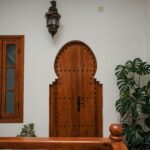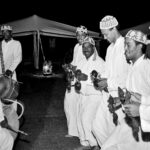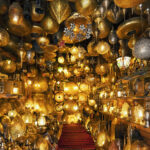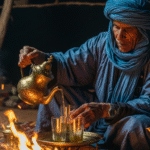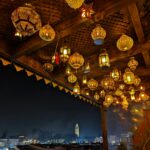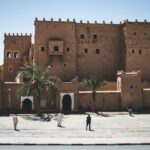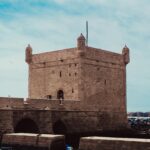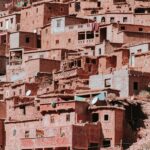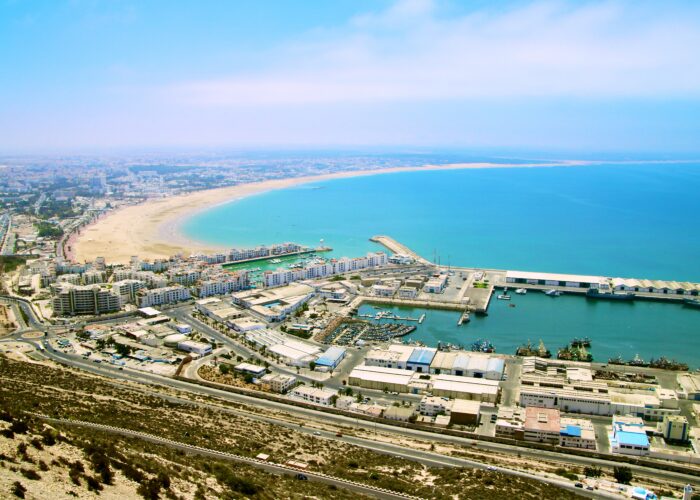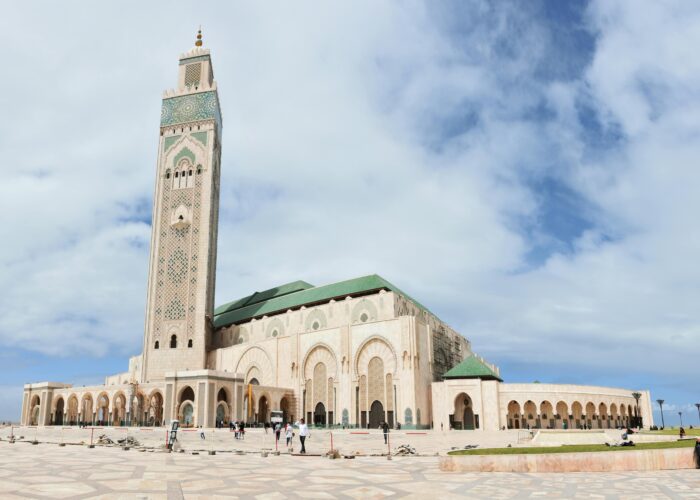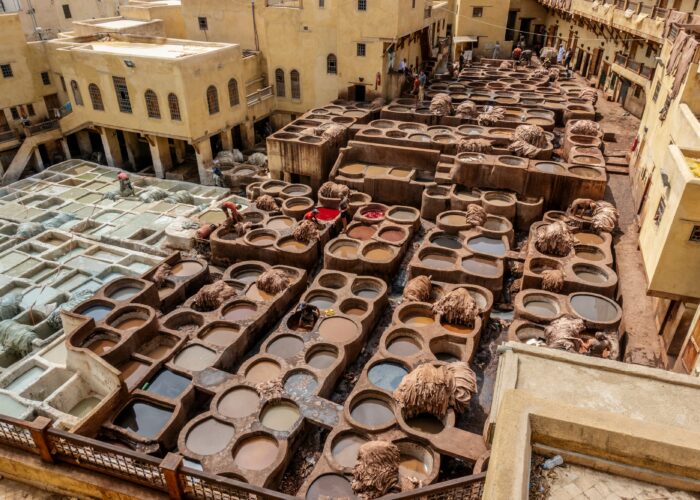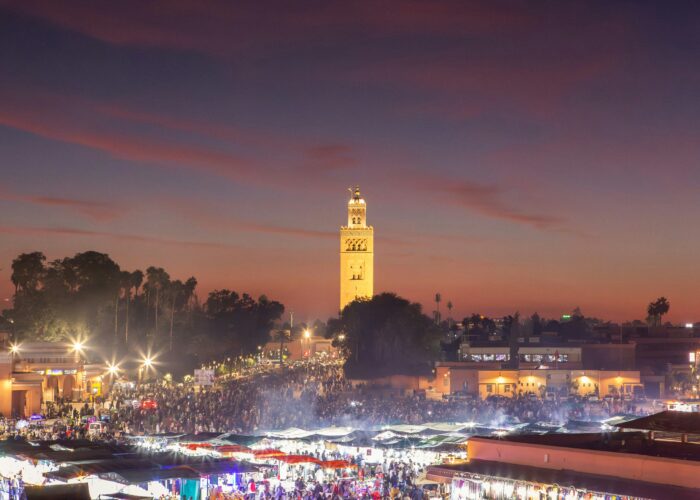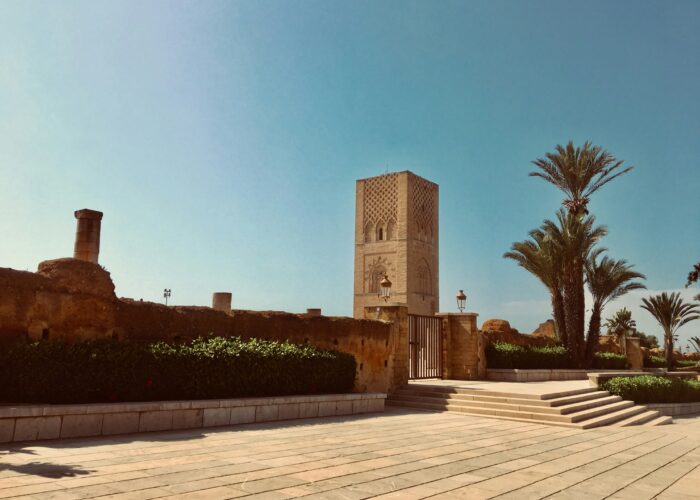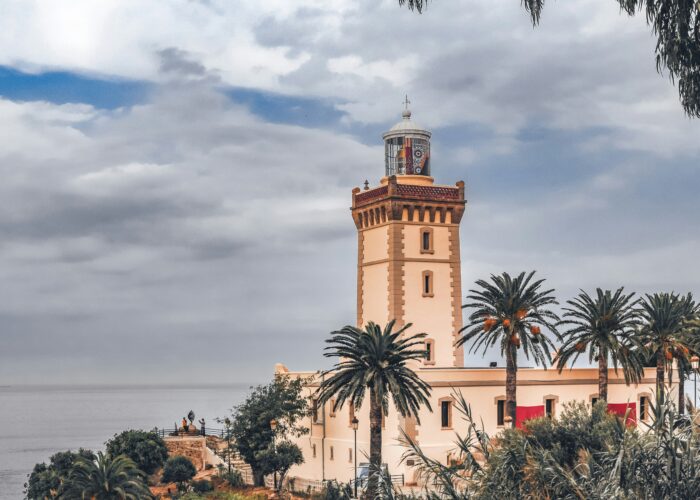Introduction to Jewish Heritage in Morocco
Morocco has a long and intricate history of Jewish communities that dates back over two millennia. The Jewish population in Morocco has origins linked to the Phoenician traders around 2000 BCE, making it one of the oldest Jewish communities in the world. Throughout the centuries, Jews have played a significant role in Moroccan society, contributing to its cultural, economic, and intellectual life. Despite facing periods of persecution and migration, the Jewish community has maintained a strong presence, adapting to the dynamic changes that have shaped Moroccan history.
The Jewish heritage of Morocco is not solely a story of survival; it is also one of remarkable cultural synthesis. Moroccan Jews have developed unique customs and traditions, blending their religious practices with local influences. Famous for their vibrant music, cuisine, and architecture, the Jewish community has left indelible marks within Moroccan culture that can still be seen today. Cities such as Fez, Marrakech, and Essaouira house historic synagogues, cemeteries, and even Jewish quarters known as mellahs, which serve as testament to the once-thriving Jewish life in the region.
In recent times, there has been a resurgence of interest in Jewish heritage in Morocco, both among locals and tourists. Travelers are increasingly seeking to explore the historical sites, participate in cultural events, and learn about the contributions of Jews to Moroccan society. This growing interest has fostered a greater appreciation of Morocco’s rich tapestry of cultures and reinforced the significance of the Jewish narrative within the nation’s history. As we embark on this journey to uncover the Jewish heritage of Morocco, we will delve into the complexities and richness of these communities, highlighting their enduring legacy in contemporary Moroccan society.
The Mellahs: Historic Jewish Quarters

The mellahs of Morocco represent a significant aspect of the country’s Jewish heritage, showcasing the unique history and interactions between Jewish and Muslim communities over centuries. Traditionally located in urban areas, the mellahs served as designated neighborhoods for Jewish populations, often marked by distinctive architectural styles and communal features. The origins of these quarters can be traced back to the 15th century when Jews began to settle in Moroccan cities, seeking refuge from the persecution they faced in Spain and elsewhere in Europe.
One of the most notable mellahs can be found in Marrakech, known for its narrow winding streets and beautifully decorated homes. This mellah, situated close to the historic Medina, reflects a blend of Moroccan architectural influences, with intricate stucco work and vibrant tile mosaics. Daily life in the mellah was characterized by a tight-knit community atmosphere, where markets, synagogues, and schools flourished alongside one another. The religious and cultural practices of the Jewish residents contributed immensely to the character of the neighborhoods, making them vibrant centers of Jewish life.
Another prominent example is the mellah of Fes, which boasts some of the most well-preserved architectural elements and is recognized as a UNESCO World Heritage site. Here, the streets are lined with traditional houses adorned with beautiful woodwork and wrought iron balconies. The mellahs often housed important synagogues and community centers that played a crucial role in sustaining Jewish traditions and customs within Moroccan society.
In contemporary times, the mellahs still hold cultural significance, albeit many of them have seen a decline in population as Jews have emigrated from Morocco. However, efforts to preserve these historic quarters are ongoing, recognizing their importance in telling the story of Morocco’s diverse cultural tapestry. The mellahs remain a symbol of the coexistence and shared heritage that characterized the Jewish presence in Morocco.
Synagogues: Sacred Spaces of Worship
The Jewish community in Morocco has historically found sanctuary and identity within its numerous synagogues, each standing as a testament to the resilience and faith of its people. Among the notable ones is the Ibn Danan Synagogue in Fes, an exquisite example of Moroccan craftsmanship. Built in the 17th century, this synagogue showcases a blend of Islamic and Jewish architectural styles, highlighted by intricate woodwork and colorful tiles. The synagogue not only serves as a place of worship but also functions as a cultural heritage site, reflecting the rich history of Jews in Fes, where they once actively contributed to the vibrant cultural tapestry of the city.
Another significant synagogue is the Slat Lkahal in Marrakech, which dates back to the 16th century. This site is particularly important as it was the main synagogue for the local Jewish community for many years. With its notable arched doorways and elegantly designed prayer halls, Slat Lkahal reveals the spiritual devotion of its congregation. The synagogue has also played a vital role in the communal life of Marrakech’s Jews, serving not just as a house of worship but as a gathering space for celebrations and communal events. The rich history surrounding these synagogues embodies the enduring spirit of Moroccan Jewry and their connection to the land.
Both the Ibn Danan Synagogue and Slat Lkahal illustrate the architectural diversity and cultural significance of these sacred spaces, which continue to inspire awe and reflection among visitors. They serve as reminders of the historical landscape of Jewish life in Morocco and the intricate relationship between the various communities that have coexisted throughout centuries. These synagogues are not just places of worship; they are living monuments that preserve and narrate the vibrant story of Moroccan Jewish heritage.
Jewish Cemeteries: Silent Witnesses of History
The Jewish cemeteries in Morocco represent not only final resting places for the deceased but also serve as significant repositories of cultural memory and identity for the Jewish community. These sites hold deep historical value, reflecting centuries of Jewish life in Morocco, adorned with unique burial customs and architectural styles. Among the most notable cemeteries is the Jewish cemetery in Fes, known for its remarkable architectural features and historical import. Established in the 19th century within the medina, this cemetery is a testament to the vibrant Jewish life that existed in the city.
The tombstones, often intricately carved, embody rich symbolism and reflect the artistry of the Jewish community. Hebrew inscriptions alongside symbolic motifs such as Stars of David serve as poignant reminders of the individuals buried there. Each stone tells a story, offering insights into the lives and experiences of Moroccan Jews throughout history. Similarly, the ancient burial ground in Essaouira is a significant landmark, encapsulating a blend of local influences and traditional Jewish practices. Its picturesque setting by the Atlantic Ocean adds to its historical allure.
The customs surrounding burial practices are deeply rooted in Jewish tradition, emphasizing respect for the deceased and the importance of memory. Traditionally, Jews in Morocco adopted the practice of burying their loved ones quickly, aligning with halachic (Jewish legal) guidelines. However, communal rituals and mourning practices, such as the recitation of the Kaddish or the shiva period, underscore the community’s tight-knit bonds and collective memory. Today, these cemeteries continue to be revered not only by descendants of Moroccan Jews but also by historians and cultural enthusiasts, reinforcing their role as silent witnesses to the dynamic history of Jewish life in Morocco.
Interfaith History: Coexistence and Cultural Exchange
The interfaith history of Morocco is characterized by a rich tapestry of coexistence and cultural exchange between Moroccan Jews and Muslims. These two communities have shared a long-standing and complex relationship, marked by periods of alliance, mutual respect, and the ebb and flow of political and social dynamics. Historical records indicate that Jews have lived in Morocco for over two thousand years, steadily becoming an integral part of the nation’s cultural fabric.
From the medieval period to the modern era, Moroccan Jews and Muslims engaged in various spheres of life, contributing to one another’s social and cultural development. In cities like Fez and Marrakech, Jewish artisans and merchants were often housed in the Mellah, the Jewish quarter, which were strategically situated near Muslim marketplaces. This proximity fostered economic collaboration and cultural exchanges that allowed both communities to thrive. Such interactions also led to the integration of various culinary traditions, artistic expressions, and even linguistic exchanges, contributing to the unique diversity of Moroccan cultural heritage.
Moreover, the alliances that emerged during historical events, such as the Reconquista and World War II, further exemplified the solidarity between Jews and Muslims in Morocco. During times of persecution, many Jews found refuge under Muslim rulers, reinforcing a spirit of mutual support that was rooted in shared values and collective human experiences. This cooperation has significantly shaped Morocco’s identity, showcasing a profound commitment to coexistence and tolerance.
In the realm of cultural exchange, numerous festivals, songs, and traditions developed that reflect the amalgamation of Jewish and Islamic influences. The shared celebration of some holidays, along with a common appreciation for art and literature, has fostered a mutual enrichment that continues to be a source of pride for both communities. Ultimately, the interfaith history of Moroccan Jews and Muslims stands as a testament to their ability to navigate complex social landscapes while preserving a shared commitment to cultural harmony.
Culinary Experiences: A Taste of Jewish Heritage
The culinary traditions of Moroccan Jewry are a remarkable reflection of the rich and diverse cultural tapestry found within the nation. Over centuries, the Jewish community in Morocco has contributed significantly to the country’s gastronomic landscape, resulting in a unique fusion of flavors and ingredients that characterize both Jewish and broader Moroccan cuisine. Some signature dishes, such as
chraimi, a spicy fish stew, and tfina, a slow-cooked beef dish, showcase the delightful marriage of spices, herbs, and techniques that are synonymous with Moroccan cooking. These dishes, often prepared during Shabbat dinners and holiday celebrations, serve as culinary markers of Jewish identity, highlighting the community’s resilience and adaptability throughout history.
Several traditional Jewish festive foods have become integral to Moroccan cuisine, particularly during major holidays. For example, during Passover, the Jewish community prepares matzah ball soup with a Moroccan twist, incorporating local spices that imbue the dish with a distinct flavor profile. Similarly, sweets like sfinge and h’gira are enjoyed during celebrations, offering a taste of heritage that resonates with both the Jewish and Muslim populations. The sweet pastries often feature local ingredients like almonds and honey, illustrating how Moroccan Jewry harnesses local culinary practices.
Moreover, food serves as a vital means of cultural preservation among Moroccan Jews. Family recipes are narrated through generations, embodying the communal aspect of dining that transcends mere sustenance. Festivals such as Mimouna, celebrated at the end of Passover, highlight the interweaving of hospitality, culinary artistry, and cultural expression. It is during such gatherings that traditional dishes take center stage, reinforcing bonds within the community while showcasing the vibrant history of Jewish cuisine in Morocco. The culinary experiences of Moroccan Jewry encapsulate a rich narrative, transforming meals into cherished rituals that preserve the legacy of a profound cultural heritage.
Cultural Festivals and Events: Celebrating Jewish Heritage
The rich tapestry of Jewish heritage in Morocco is vividly expressed through its cultural festivals and events, which serve as vital platforms for the preservation and celebration of traditions. One of the most prominent is the annual Mimouna festival. Traditionally observed the day after Passover, Mimouna embodies a joyful spirit, welcoming spring and symbolizing the end of the Pesach holiday. Families across Morocco, especially in cities like Marrakesh and Casablanca, host open houses where they invite friends and neighbors to join in the celebrations. The festival is marked by a plethora of culinary delights, particularly the iconic moufleta—a sweet, crepe-like bread. This communal festivity not only reinforces familial ties but also fosters a shared sense of identity among diverse communities.
Another significant event is the International Jewish Music Festival, which takes place in various locations throughout the country. This festival showcases the profound influence of Jewish music on Moroccan culture. It features performances from both local artists and international musicians, creating an atmosphere of unity and appreciation for the diverse interpretations of Jewish musical heritage. The festival not only highlights traditional forms but also encourages innovative expressions, ensuring that the richness of Jewish musical history is accessible to younger generations.
These gatherings resonate deeply with the Moroccan Jewish community, as they serve to reinforce connections to heritage while bridging gaps between different cultural backgrounds. The participation of individuals from various religious and ethnic groups is crucial, demonstrating the inclusive nature of Moroccan society. By engaging in these celebrations, communities promote understanding and respect, which are vital for cultural continuity. Ultimately, such events play a paramount role in maintaining Jewish heritage in Morocco, ensuring that the rich traditions are passed down to future generations while enhancing cultural dialogue across the nation.
Modern-Day Jewish Communities: A Living Legacy
The Jewish community in Morocco has historically been vibrant, marked by a rich cultural heritage and significant contributions to the broader Moroccan society. Currently, there are approximately 2,500 to 3,000 Jews residing in Morocco, primarily concentrated in urban areas such as Casablanca, Marrakech, and Rabat. Though this number reflects a decline from the mid-20th century, when the community was thriving, those who remain actively engage in preserving their cultural practices and traditions.
Modern-day Jewish communities in Morocco are defined by their efforts to maintain their synagogues, schools, and cultural events. Organizations like the Jewish Community of Casablanca work diligently to support the needs of the Jewish population, including facilitating religious services and community gatherings. Notably, the commitment to heritage preservation is evident in the restoration of significant synagogues, such as the Slat Lkahal synagogue in Marrakech, which serves as a testament to the community’s enduring legacy.
In addition to safeguarding religious sites, the Moroccan Jewish community partakes in cultural events that celebrate their unique identity. Annual events such as the International Jewish Film Festival and the Mimouna celebration, which marks the end of Passover, showcase the lively cultural exchanges between Jewish and Muslim communities. These activities highlight the enduring kinship between the two groups, fostering a spirit of coexistence and mutual respect that has historically characterized Moroccan society.
Importantly, the relationship between Jewish and Muslim communities in contemporary Morocco remains strong, as they often collaborate on cultural and humanitarian initiatives. This cooperation reflects a shared commitment to their respective traditions, promoting a harmonious coexistence. The current state of Jewish communities in Morocco serves as a living legacy of the country’s diverse history, illustrating how cultural heritage can thrive even in changing times.
Conclusion: A Call to Explore and Remember
The rich tapestry of Morocco’s Jewish heritage offers a unique lens through which to understand the historical and cultural complexities of this vibrant North African nation. As we reflect on the profound impact that Moroccan Jewry has had on the region, it becomes evident that engaging with this legacy is not only an opportunity for personal enrichment but also a vital act of respect and remembrance. Visitors to Morocco are encouraged to explore key sites such as the historic Mellahs, synagogues, and Jewish cemeteries, each serving as a poignant reminder of a thriving community that once flourished in the region.
Participating in guided tours led by knowledgeable local historians can further enhance the experience, providing deeper insights into the narratives that have shaped Moroccan Jewish culture. These tours not only highlight the historical significance of Jewish sites but also foster connections between different cultural communities, promoting interfaith dialogue and understanding. Exploring these cherished landmarks and attending cultural festivals not only honors the memory of those who contributed to Morocco’s diverse history but also helps keep their stories alive in contemporary society.
Moreover, engaging with local Jewish communities can lead to meaningful interactions that enrich one’s understanding of the enduring legacy of Moroccan Jewry. This cultural exchange encourages a broader appreciation for the resilience and contributions of Jewish individuals in Moroccan society. As we travel through this beautiful country, let us embark on a journey that not only uncovers its past but also embraces its present. Together, we can ensure that the stories of Morocco’s Jewish heritage resonate for generations to come, fostering a spirit of unity and respect across cultures.


